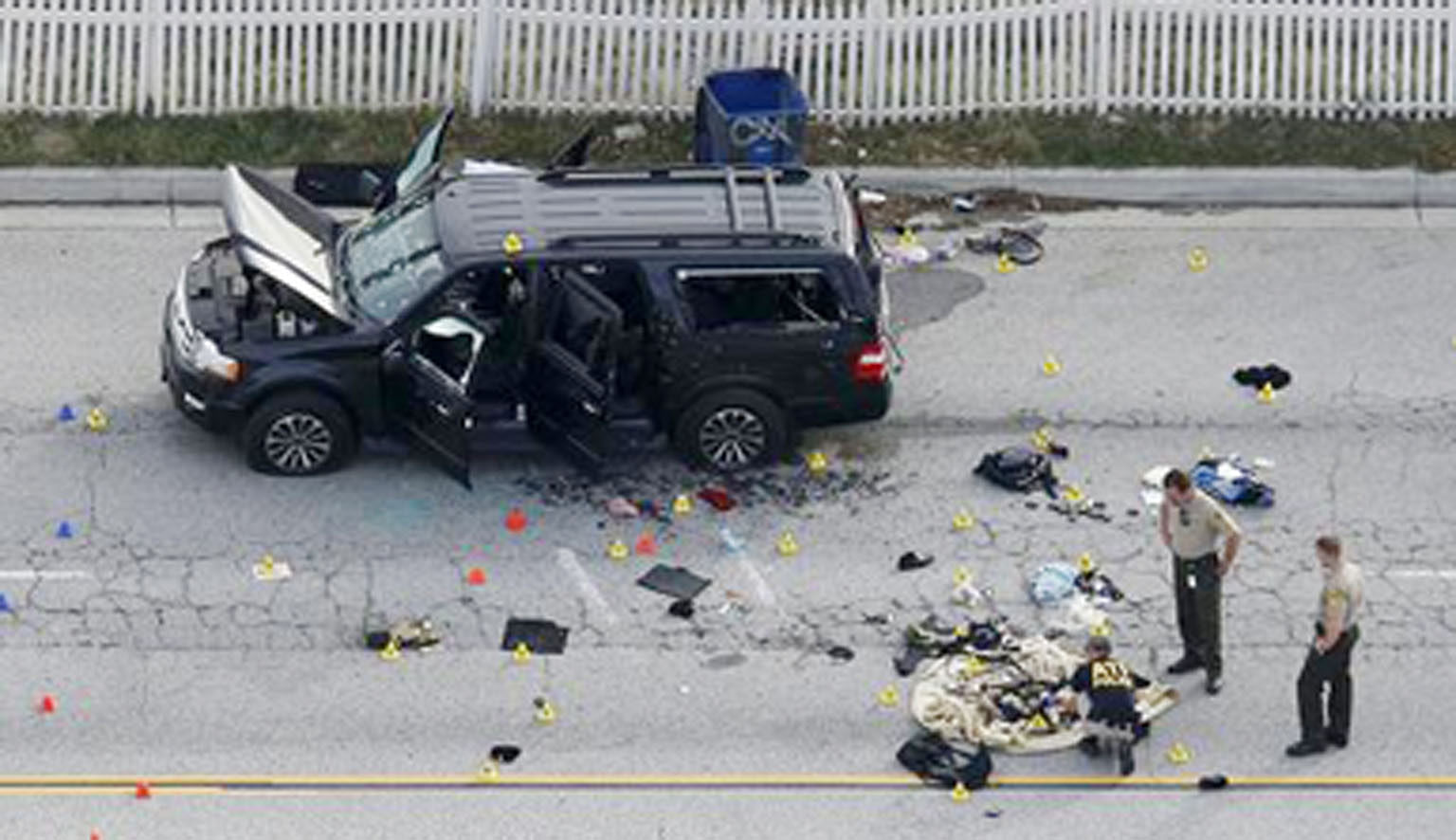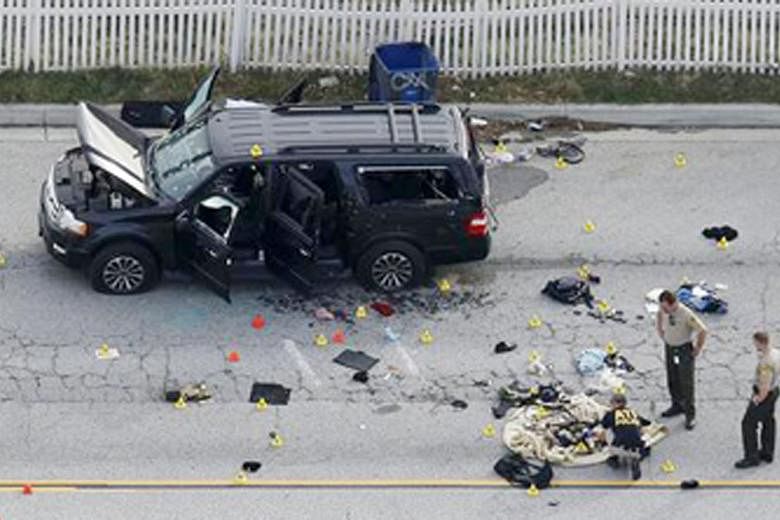When society is functioning well, we should, at the very least, be able to trust that the people around us won't try to kill us. And yet, after a mass shooting, we may wonder.
We may worry in the subsequent days and weeks as we send our children off to school, ride public transport to work, join the crowd at a concert and settle into the pews at church. For some people, that fear may mean avoiding certain places, at least for a time. For others, it means arming themselves in defence.
After the 2015 shooting in San Bernardino, California, gun sales spiked most in the immediate vicinity, suggesting that safety concerns, more than concerns about potential changes to gun laws, drove those purchases.
But while we all know from experience that shootings can lead to faltering trust, the reverse appears to be true as well.
My research has found that declining trust in our institutions, our social structures and one another leads to more lethal violence, including mass murder. As abstract as these sentiments may seem, they predispose certain people to kill. In fact, they explain homicide rates better than any other factor, including unemployment, guns, drugs or a permissive justice system.
When we lose faith in our government and political leaders, when we lack a sense of kinship with others, when we feel we just can't get a fair shake, it affects the confidence with which we go about our lives.
Small disagreements, indignities and disappointments that we might otherwise brush off may enrage us - generating hostile, defensive and predatory emotions - and in some cases give way to violence. This may be rooted in our biology. Primate studies have shown that apes and monkeys secrete more of the hormones that cause or facilitate aggression, and less of the hormones that deter aggression, when their tribes experience political instability, faction-fighting and struggles for dominance.
People who suffer from dangerous forms of mental illness, who have experienced severe reversals in their lives or who have suicidal thoughts are most vulnerable when these feelings course through society, as Adam Lankford describes in The Myth Of Martyrdom. They are more likely to lash out, as we have seen in case after case of mass murder.
Some mass killers have written manifestos. Yet the relationship between trust and homicide is seldom so explicit. Everyday murderers don't stop to cite distrust of government or their fellow citizens as a reason they killed. Few homicides are motivated directly by political conflict or political feelings, anyway. But the link between trust in government and homicide rates has been evident everywhere, across the centuries.

In England, for instance, 60,000 voting rights demonstrators gathered in Manchester in 1819 to demand the right to elect their own representatives in Parliament. They were viciously attacked by militiamen wielding sabres on horseback. Eleven people were killed outright and countless others were wounded.
The homicide rate in England and Wales doubled over the next five years, and it remained high throughout the years of agitation for voting rights. But when the Second Reform Act passed in 1867, enfranchising propertyless household heads in urban areas, the homicide rate fell suddenly by half; and when the Third Reform Act passed in 1884, enfranchising propertyless household heads in rural areas, the rate again fell suddenly by half. Empowerment, inclusion and faith in government mattered.
The same patterns appear throughout American history. Homicide rates (which reflect violence between unrelated adults and do not include domestic violence or war casualties) dropped dramatically after the Revolution, as the new nation developed institutions in which people could put their faith and as Americans developed a sense of patriotism and belonging.
By the early 19th century, although murder remained more common on the contested frontiers and in the slave-holding South, the North and the mountainous regions of the South - from Appalachia to the Ozarks - had some of the lowest homicide rates in the world. (They were only about three per 100,000 persons per year, which is low, even by today's standards, and considering their lack of modern medicine.)
That changed when reverence for political leaders declined in the wake of the Mexican War and homicide rates doubled or tripled - 15 years before the Civil War and Reconstruction made things worse.
We can measure the inverse relationship between homicide and trust with more precision in modern times. The murder rate since World War II has tracked almost perfectly, as criminologist Gary LaFree has observed, with the proportion of Americans who say they "trust the government in Washington to do what is right" most of the time and who believe that most public officials are honest.
The rate also rises and falls along with answers to surveys asking about the level of trust we have in our neighbours, how safe we feel walking around at night near our homes and how heavily armed we think we need to be.
For brief periods during the New Deal, World War II and the early years of the Cold War, things got better: We recaptured our patriotism, our fellow-feeling and our trust in government. But divisions over the civil rights movement and the Vietnam War tore that emerging national consensus apart. The homicide rate peaked for African Americans during the Nixon administration, at 43 per 100,000 persons per year, when their trust in government was at its lowest and their feelings of alienation were highest.
And it peaked for white Americans in 1980, at seven per 100,000 persons annually, when accumulated anger over bussing, welfare, affirmative action, defeat in Vietnam and humiliation in Iran boiled over into the Reagan revolution. (If we had sustained the high rates that prevailed nationally from the 1970s to the mid-1990s - nine to 10 per 100,000 per year - one in every 142 Americans would have been killed, including one of every 27 black males. And if we continue to keep our current, lower rate - 5.5 per 100,000 annually - one in every 231 Americans will be killed, including one of every 38 black males.)
It has been somewhat harder to see the relationship between trust and homicide in the past decade, because hyper-partisanship has led people to answer polls according to their feelings about the party in power, rather than their feelings about society as a whole.
But before the 2008 election, my colleague Michael Maltz and I forecast that if Mr Barack Obama secured the nomination and won the presidency, the homicide rate in America's cities would drop because of what his candidacy would mean to African Americans and other minorities, who live disproportionately in urban areas. We also worried that the homicide rate would rise in the areas of the country most resistant to the idea of an African-American president.
The subsequent divergence in the nation's homicide rates appeared to bear this out. Counties that were more heavily urban and minority saw their homicide rates fall. But the rates soared in the mainly white counties in the upper South - from West Virginia and Arkansas to Oklahoma - that gave less support to Mr Obama than historical voting records and national voting trends would have suggested and that would go on to become the heart of the birther movement.
Criminologist Richard Rosenfeld has further suggested that the rise in murders in certain US cities in 2015 is better explained by a loss of trust and a decline in the legitimacy of the justice system than by the heroin epidemic, the (slight) drop in the prison population or supposedly less-aggressive policing after Ferguson. "When people do not trust the police to act on their behalf and to treat them fairly and with respect, they lose confidence in the formal apparatus of social control and become more likely to take matters into their own hands," he wrote in a report for the Justice Department last year.
"Lack of confidence in the police among African Americans predates the recent police killings in Ferguson, Cleveland, New York and elsewhere. But it is likely to be activated by such incidents, transforming longstanding latent grievances into an acute legitimacy crisis."
It's cyclical. Loss of trust contributes to the homicides of unarmed black citizens by fearful or angry white police officers, and to the murders of officers by angry blacks, which further diminishes the trust between citizens and law enforcement. When trust disappears, no one's life matters.
What might the future hold? The election of Mr Donald Trump may lead to a decline in homicide in certain parts of the country, by empowering the white Americans who resent minorities and immigrants most deeply.
But most of his support, especially in the Rust Belt, was not based on race. He won because he promised to help middle-and working-class whites economically. If he fails or, worse, if his supporters decide he conned them and was interested only in enriching himself and the rest of the nation's economic elite, all bets are off. And given Mr Trump's attacks on the federal government and on rival politicians, his administration's dismissal of Black Lives Matter, the question of how much Russian intervention may have compromised the election, and infringements on voting rights, it is very possible that the homicide rate will continue to rise, especially in the poorest neighbourhoods in our cities.
Not every mass murderer is driven to kill by these broad historical forces. Some, such as the gunmen in Aurora, Colorado; Newtown, Connecticut; and Tucson, Arizona are mentally ill and are copying the violence they see around them.
But most mass murderers have been deeply affected by the distrust, disillusionment and enmity that pervade our society. The Oklahoma City bomber was a suicidal white supremacist, bitter at a government that had dashed his dream of becoming an Army Ranger and that, in his eyes, cared more about minorities than it did about him.
The Orlando shooter, a man who was so disturbed that he frightened his co-workers, was bitter over his inability to land a job as a police officer. He hated the government, blacks, women and gays - perhaps, as the evidence suggests, because he was confused about his sexuality.
The congressional baseball practice shooter blamed politicians and the wealthy for his own and the nation's ills. All these men had difficulty in relationships and were apparently jealous of people who were happy, loved and loving, which is why they targeted ball games, nightclubs and country music concerts. Their problems were personal.
But people with personal problems are infected by our hatreds. We have all played a part in creating them.
WASHINGTON POST
- Randolph Roth is a professor of history and sociology at Ohio State University and the author of American Homicide.

